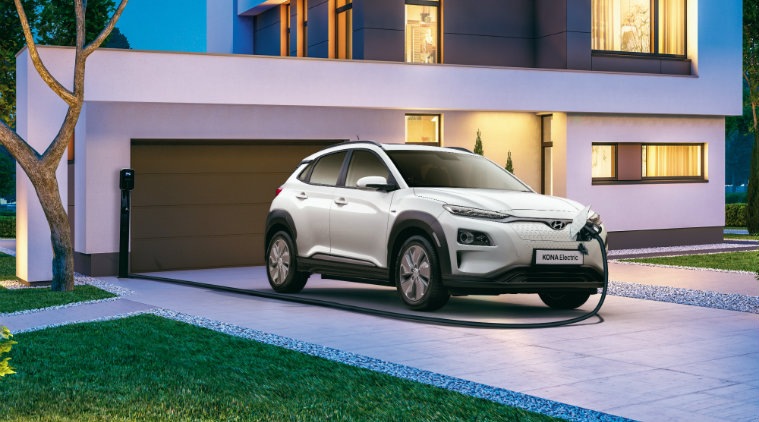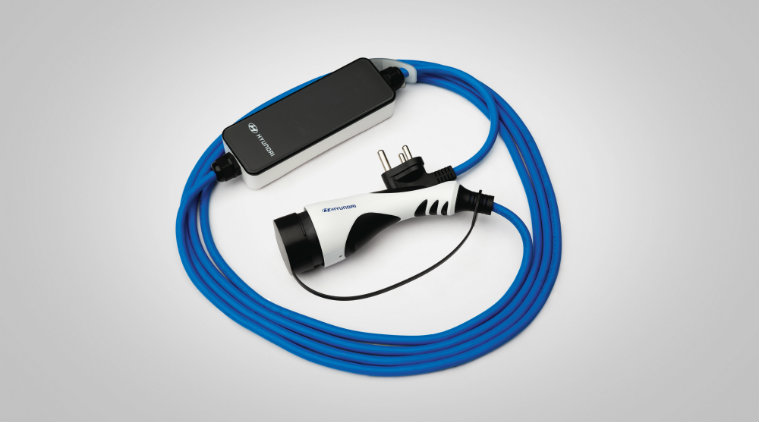
How does an Electric Vehicle charge?
Here’s how an electric car’s charging mechanism works and how we determine the charging speeds and types.
Electric vehicles (EVs) have started catching up in India, with various manufacturers like Ather, Revolt and Hyundai showing off their electric vehicles in the country. One of the major aspects of EVs is how they are powered. This depends upon power rating, connector type, cabling requirements and vehicle specification.
One of the major parts of charging EVs is the power deliverance via AC (Alternating Current) and DC (Direct Current). This varies with vehicle types, charging network, charger types and more. Today we will be explaining how charging an EV works.
As of now, there are three types of EV charging methods – rapid, fast and slow. Slow chargers have a power deliverance of up to 3kW, which makes them apt for being used for overnight charging. These chargers usually take between six to 12 hours for a pure-EV to fully charge. For adding support for slow charging, EV manufacturers have to add a 3-pin or Type 2 socket to the vehicles. Slow chargers are only available with DC charging.
Fast chargers come with a power deliverance of up to 22kW, which takes approximately four hours to fully charge EVs. To get these manufacturers need to add a Type 1 or Type 2 sockets to vehicles. Just like the slow chargers, fast chargers are also only available in DC charging.
Unlike slow and fast chargers, rapid chargers are of two types: AC and DC. Currently, most Rapid AC chargers are rated at 43kW, whereas, Rapid DC chargers are rated at a minimum power deliverance of 50kW. Both of these chargers can charge EVs up to 80 per cent within 30 to 60 minutes. Rapid AC supporting cars are required to have a Type 2 connector, whereas, Rapic DC supporting EVs are required to either have a CCS, CHAdeMO or Tesla Type 2 connector.

Rapid chargers, to protect the EV’s batteries and extend their life, power down, when the batteries reach 80 per cent of charging. The next generation of rapid DC chargers are expected to increase power delivery to 150kW and then to 350kW, which will reduce charging times. As of now, Tesla has the fastest rapid DC chargers with 120kW power delivery.
Though Tesla’s superchargers are the most powerful EV chargers in the market, they are not that widespread globally. So if you are planning to purchase a Tesla outside of the US, we recommend that you pick up an adapter along with it to enable the vehicle to use the 50 kW rapid units fitted with a CHAdeMO or CCS connectors.
Another big point to keep in mind is that except for the US, other countries don’t have such a vast network of charging stations built to support an electric ecosystem. Countries like India, which have an extremely large area to cover will see a lot of growing pains and will take a lot of time to get the infrastructure up and running. Also in various developing countries, there will also be an issue of power theft, which also would need to be taken care of.

CHAdeMO is one of the most popular connectors available in the market. It is also one of the most adopted connectors by EV manufacturers. Cars like the BMW i3, VW e-Golf and Hyundai Ioniq Electric, all of which are quite popular. The only EV able to use Rapid AC charging is Renault Zoe. However, there are a few EVs that come with an AC charger bundled with them, but they don’t take an AC charge, the charger, takes the AC current converts it to DC and then sends it to the vehicle. An example of this would be the recently showcased Hyundai Kona.
















